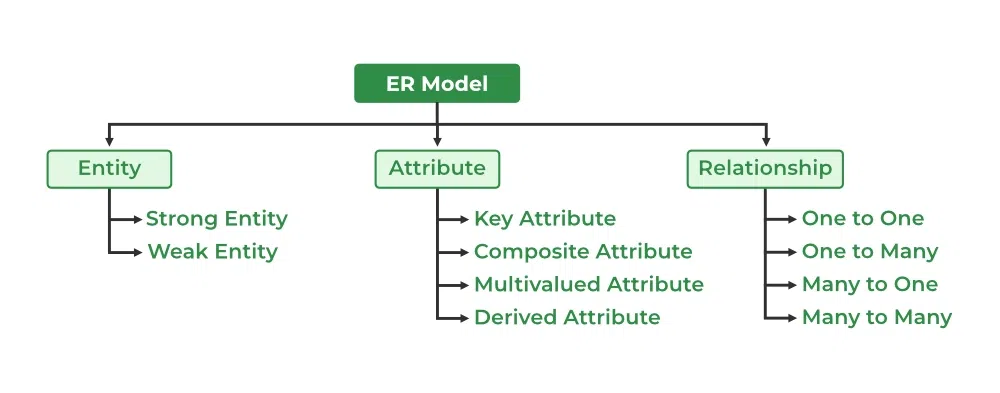Database design
normalization
OLAP vs OLTP
Expectations from a database
- consistency and accuracy
- fast data retrieval
- can evolve with business requirements
- can scale as data volume increases
- minimal costs
Database Design Goals
Data Integrity
- Entity integrity (primary keys)
- Referential integrity (foreign keys)
- Domain integrity (valid data types/constraints)
Minimize Redundancy
- Eliminate duplicate data
- Single source of truth
- Reduce update anomalies
Performance & Efficiency
- Optimal query performance
- Efficient storage utilization
- Appropriate indexing
Scalability & Flexibility
- Handle growing data volumes
- Adapt to changing requirements
- Support future enhancements
Simplicity
Simplicity: Create an understandable structure for developers and analysts
So the question is:
How to design the data structure of a database ?
Spoiler alert: it always comes down to balancing between read and write performance
Scope
We start with Entity-Relationship Diagrams: ERDs
and then:
- OLAP vs OLTP databases and design strategies
- Normalization
- anomalies to detect the need for normalization
- normalization criteria: normal forms: 1NF, 2NF, 3NF
- Denormalization when needed (OLAP)
Entity Relation Diagrams
Peter Chen developed the ER diagram in 1976.
Chen’s main contributions are formalizing the concepts, developing a theory with a set of data definition and manipulation operations, and specifying the translation rules from the ER model to several major types of databases including the Relational Database.
1976 !? That’s what the Mac looked like in 1976 🤪🤪🤪

The ER model was created to visualize data structures and relationships in many situations.
- Object-Oriented Systems
- Software Architecture
- Business Process Modeling
- Data Flow in systems
- and Relational Databases
ER diagrams help in system design, information architecture, and application workflows.
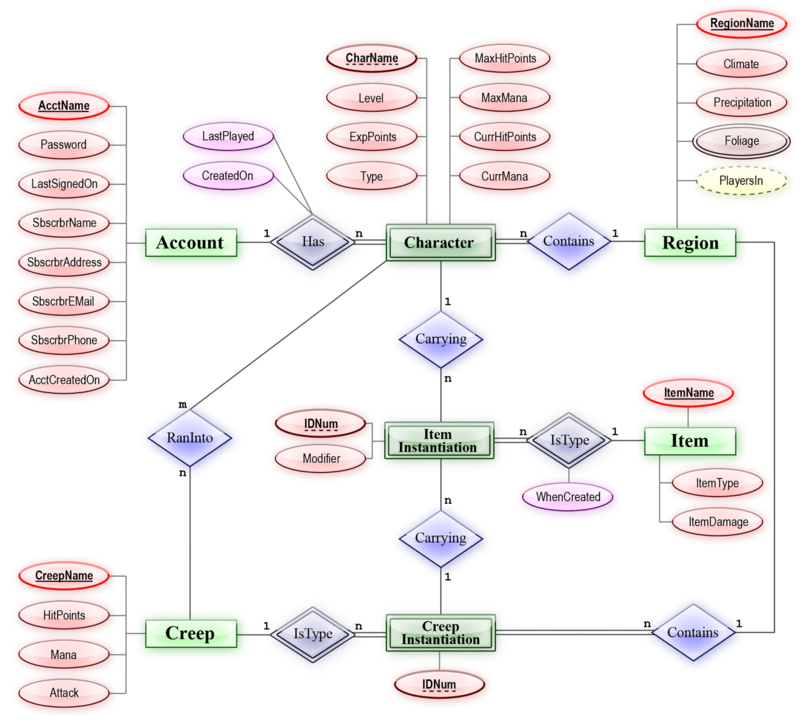
Components of an ER diagram
- Entity: An objects that is stored as data such as Student, Course or Company.
- Attribute: Properties that describes an entity such as
student_id,course_name, oremployee_email. - Relationship: A connection between entities such as “a Student enrolls in a Course”.
ER diagram rules
| English grammar structure | ER structure |
|---|---|
| Common noun | Entity type |
| Proper noun | Entity |
| Transitive verb | Relationship type |
| Intransitive verb | Attribute type |
| Adjective | Attribute for entity |
| Adverb | Attribute for relationship |
see the wikipedia page
ER Grammar Mapping: Songs & Playlists Example
- Common Noun → Entity Type
- “Song” is an entity type (a class of things)
- “Playlist” is an entity type
- “User” is an entity type
- “Artist” is an entity type
- Proper Noun → Entity (Instance)
- “Bohemian Rhapsody” is a specific
songentity - “Summer Vibes 2024” is a specific
playlistentity - “John Smith” is a specific
userentity - “Queen” is a specific
artistentity
- “Bohemian Rhapsody” is a specific
- Transitive Verb → Relationship Type
(Verbs that need an object)
- User creates Playlist
- Playlist contains Song
- Artist performs Song
- User shares Playlist
- Intransitive Verb → Attribute Type
(Verbs that don’t need an object - describe state/action)
- Song plays → becomes
durationattribute (3:42) - Song streams → becomes
play_countattribute - Playlist exists → becomes
created_dateattribute
- Song plays → becomes
- Adjective → Attribute for Entity
(Describes characteristics of nouns/entities)
- Popular song →
popularity_scoreattribute - Long song →
durationattribute - Public playlist →
is_publicattribute (boolean) - Verified artist →
is_verifiedattribute
- Popular song →
- Adverb → Attribute for Relationship
(Describes HOW the relationship occurs)
- User creates playlist recently →
timestampattribute on “creates” relationship - Song was added first →
positionattribute on “contains” relationship - User shares playlist publicly →
sharing_typeattribute on “shares” relationship - Song plays frequently →
play_frequencyattribute on user-song relationship
- User creates playlist recently →
Complete Example Sentences Mapped to ER:
“The verified artist Queen performs the popular song Bohemian Rhapsody”
- Entity types: Artist, Song
- Entities: Queen, Bohemian Rhapsody
- Relationship: performs
- Attributes:
is_verified(Artist),popularity_score(Song)
“John recently created a public playlist called Summer Vibes”
- Entity types: User, Playlist
- Entities: John, Summer Vibes
- Relationship: creates
- Relationship attribute:
timestamp(recently) - Entity attribute:
is_public(public)
“The playlist frequently contains long songs”
- Entity types: Playlist, Song
- Relationship: contains
- Relationship attribute:
frequency(frequently) - Entity attribute:
duration(long)
Visual ER Representation:
[User] ----creates----> [Playlist] ----contains----> [Song]
| (when?) | (position?) |
| | |
name is_public duration
email name title
created_date popularity
[Artist]
|
performs
|
[Song]
- Nouns become things we store (entities)
- Verbs become connections or properties
- Adjectives/Adverbs become descriptive data (attributes)
ER diagram for relational databases
In the context of relational databases, the ER Diagram represent the structure of the database.
- entities are tables
- attributes are table columns
- relations between entities can be
- one to one
- one to many
- many to many
The ER diagram displays the relations between the entities (tables) present in the database and lists their attributes (columns).
Generate an ERD in pgAdmin
- connect to the remote server
- right click on a database name
- click on ERD for database
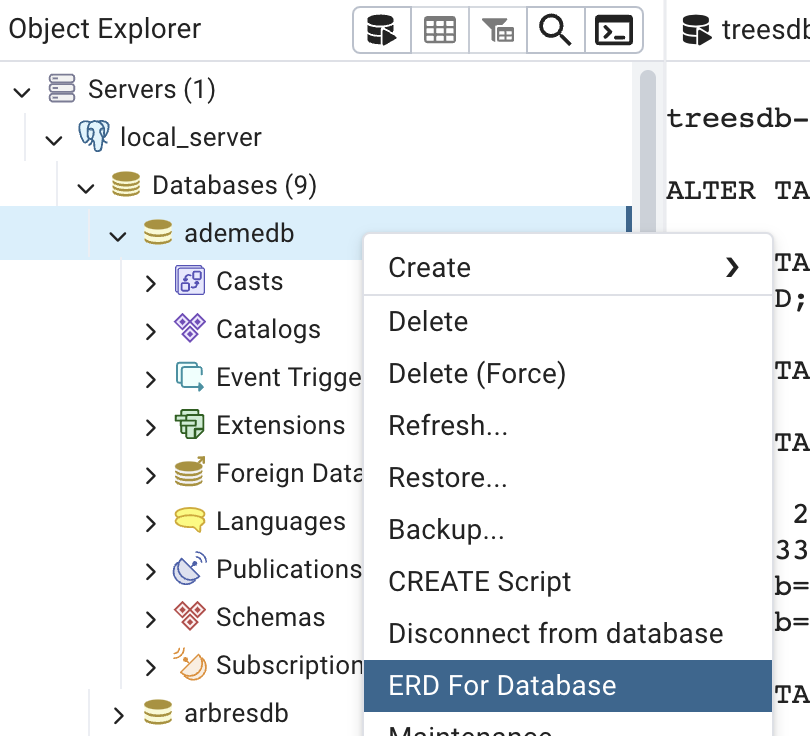
You can change notation for the relation type with
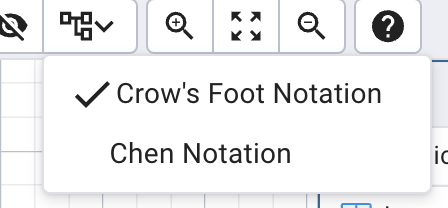
ERD - IMDB normalized
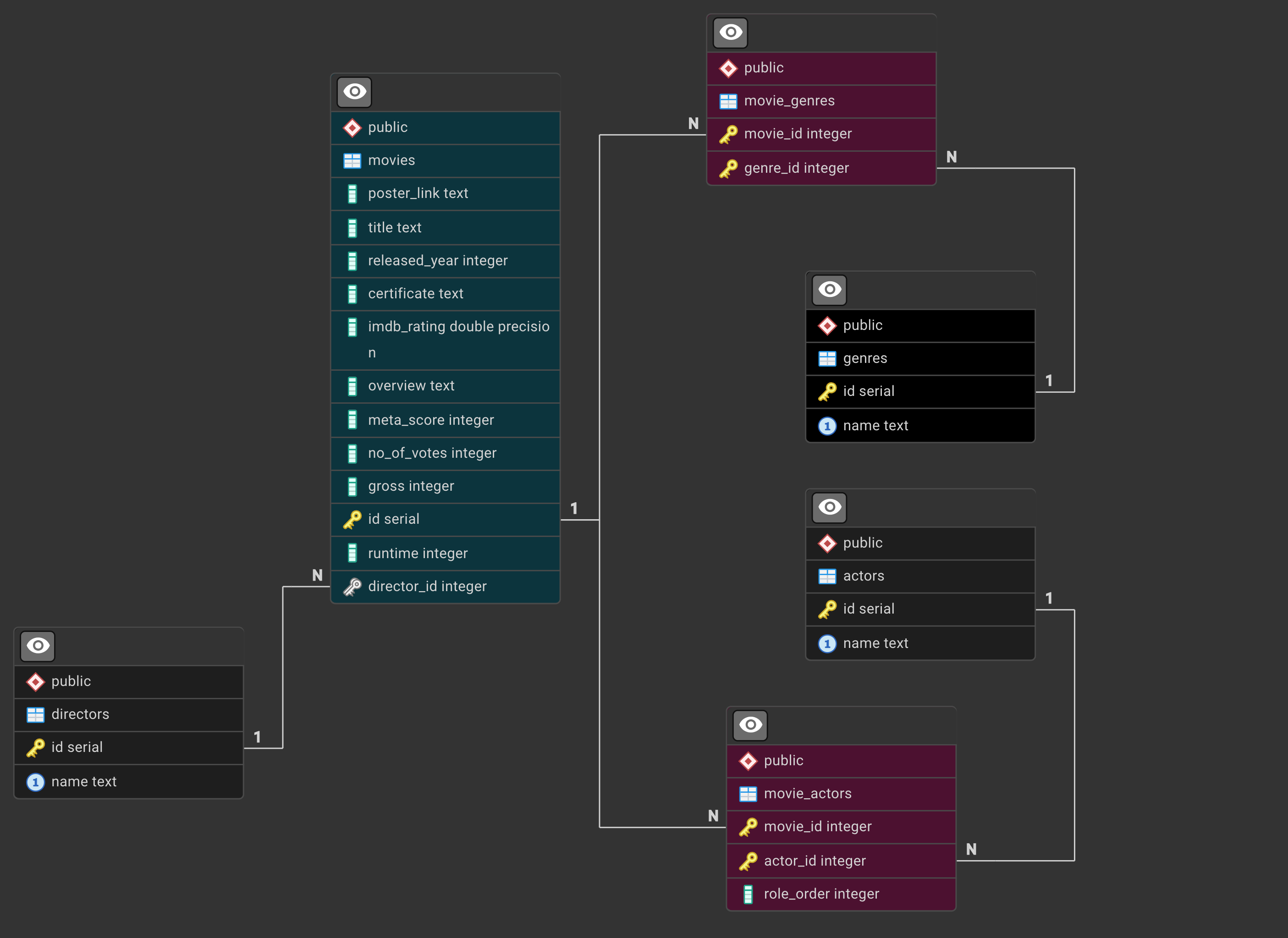
Database types: OLAP vs OLTP
2 main types of databases: OLAP vs OLTP
The usage of a database drives its data structure.
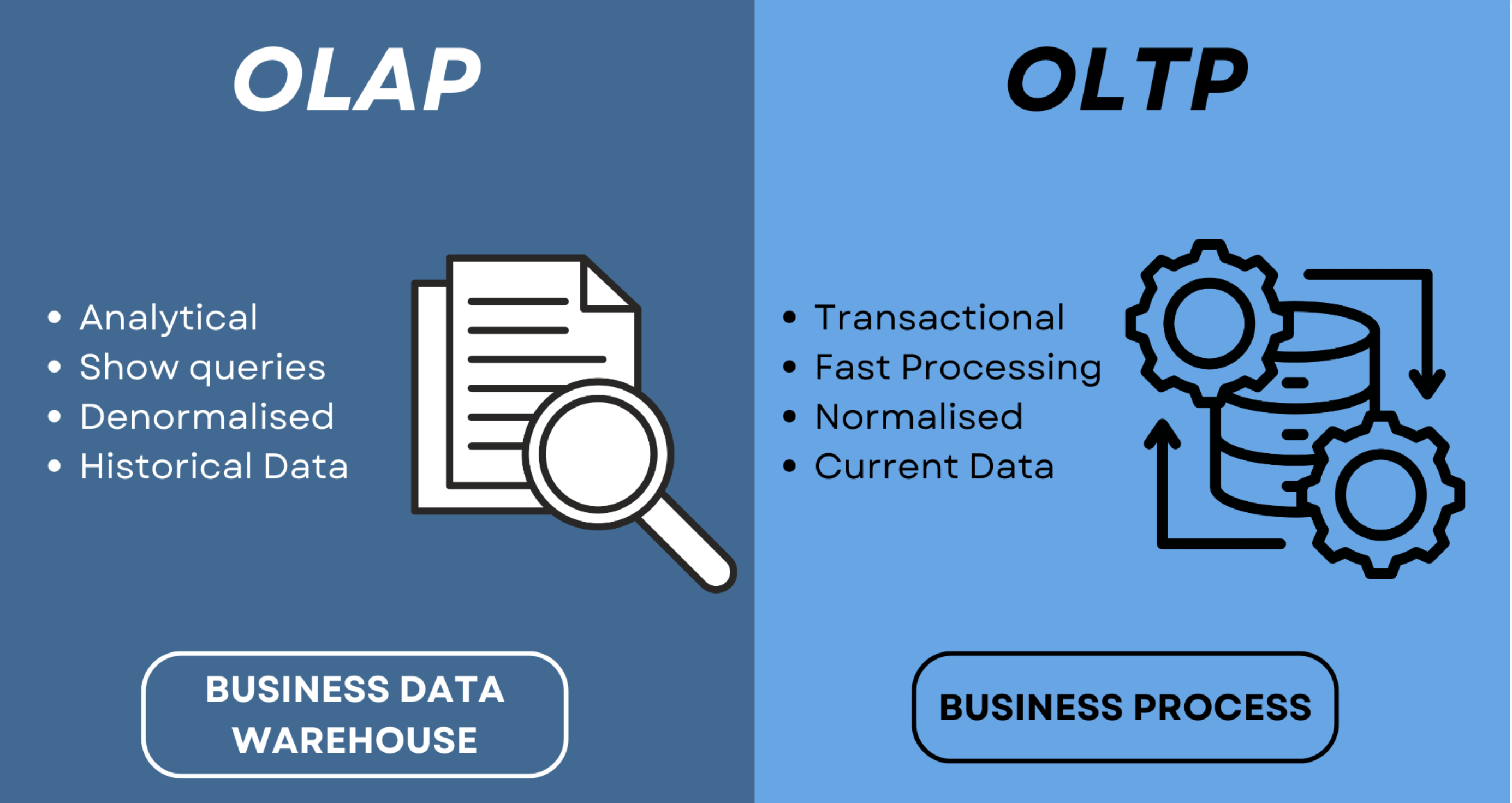
OLAP : Online Analytical Processing
- analysis, BI, reporting, dashboards,
- optimized for high read volume
- complex queries (lots of joins and calculations)
-
can be asynchronous, query execution does not have to be lightning fast
- historical data
OLAP does not have to be super fast
example:
- Spotify personalizes homepages with custom songs and playlists based on user preferences.
- Netflix movie recommendation system.
OLTP: Online Transaction Processing,
- applications, transactions, high write volume
- optimized for high write volume: data integrity, fast updates and inserts
- ACID properties for transactions (all or nothing) (ACID: (Atomicity, Consistency, Isolation, Durability))
-
synchronous, real time, speed is super important
- operational data
OLTP has to be super fast
example:
- ATM center is an OLTP application. OLTP handles the ACID properties during data transactions via the application.
- Online banking, Online airline ticket booking, sending a text message, add an item to a shopping cart.
Further reading : difference between olap and oltp in dbms.
Look at the table of differences and the Q&A at the end of the article.
Quiz
For each scenario, determine whether it’s more suited for an OLTP (Online Transaction Processing) or OLAP (Online Analytical Processing) system.
- Liking a friend’s post on Instagram.
- Analyzing trending hashtags on Mastodon over the past month.
- Sending a Snapchat message to a friend.
- Netflix recommending shows based on your viewing history.
- Ordering food through a delivery app.
- Making an in-app purchase.
- TikTok or Youtube analyzing which video types keep users watching longer.
- A fitness app calculating your average daily steps for the past year.
Solution
- OLTP: Liking a post is a simple, immediate transaction.
- OLAP: Analyzing trends over time involves processing large amounts of historical data.
- OLTP: Sending a message is a quick, individual transaction.
- OLAP: Recommendations are based on analyzing viewing patterns across users and time.
- OLTP: Placing an order is a specific, time-sensitive transaction.
- OLTP: An in-app purchase is a single, immediate financial transaction.
- OLAP: This involves analyzing user behavior patterns across many videos and users.
- OLAP: Calculating long-term averages involves processing historical data over time.
Database design
A user can have multiple phones. Consider the 2 database designs:
1 table with multiple phone columns
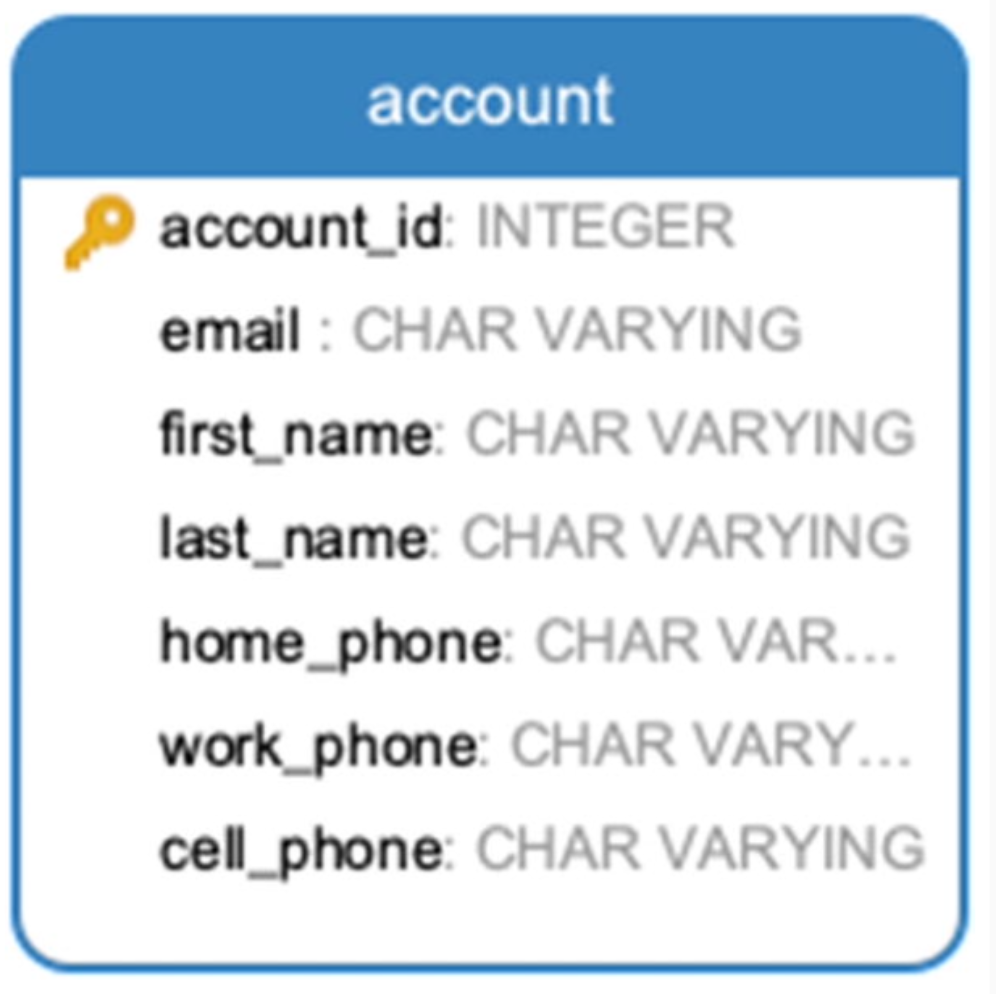
2 tables
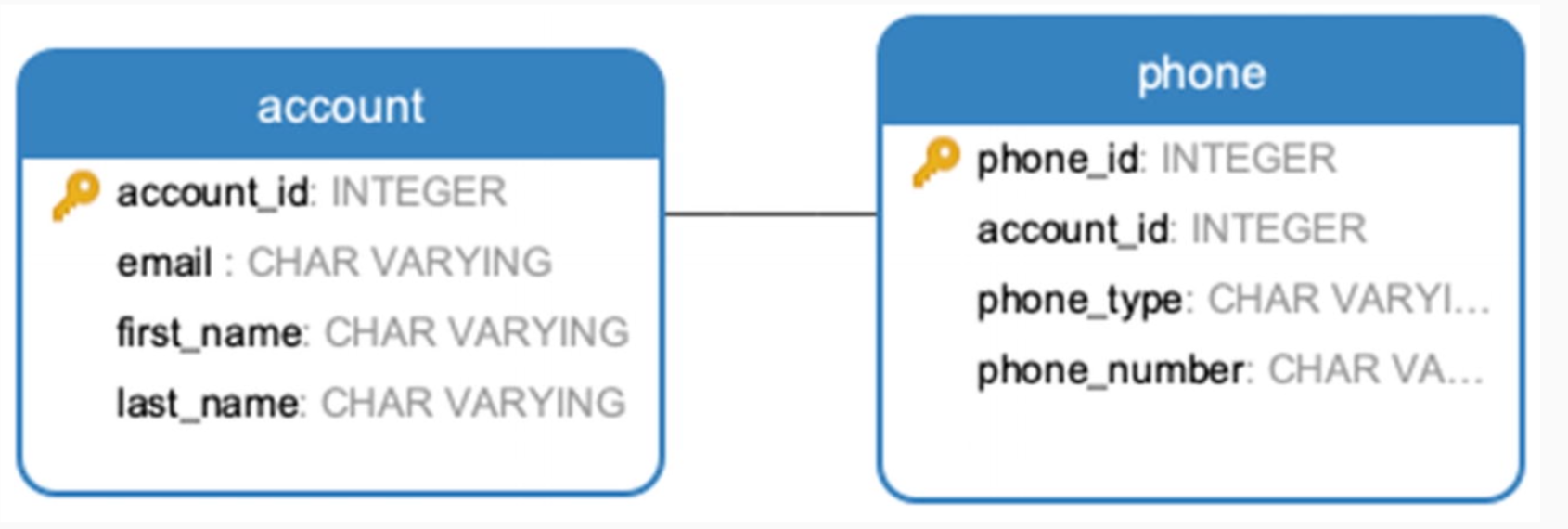
which design (1 or 2 tables) is better in terms of faster or simpler query for:
- dealing with missing phone type (no work phone)
- adding a new phone type (new secret phone)
- flagging a phone as primary
- handling a user with no phone
- displaying all the phones of an account in a dashboard
- fast retrieval search over phone number(s)
Normalization
The general goal of normalization is to reduce data redundancy and dependency by organizing data into separate, related tables.
A database is normalized if:
Each piece of information lives in exactly one place
or more formally
all column values depend only on the table primary key
This helps maintain data integrity and flexibility:
- logical entities
- independence between tables
- uniqueness of data
Normalized databases are
- easy to update
- easy to maintain
In the 1 table design for the account and its phone numbers, a phone number value depends on the name of the phone column (home_phone, work_phone, …) not just the account_id key: We can say it’s not normalized
With a table dedicated to the phones, (design with 2 tables), the phone value depends only on the phone_id key: the tables are normalized.
1 table with multiple phone columns

2 tables

Denormalization
The idea of denormalization is to create data redundancy to simplify queries and make OLAP queries faster.
Redundant data : the same data / info exists in multiple tables
SELECT queries involve fewer JOINs.
However INSERT, UPDATE, DELETE queries are more complex as multiple tables must be accounted for. Therefore data integrity is more complex to preserve.
Scenario:
In a social network, imagine that you have two tables:
- The Users table: Contains user information like
user_idnameandemail.
| user_id | user_name | |
|---|---|---|
| 101 | Ulaf | …[email protected] |
| 102 | Birgitte | …[email protected] |
| 103 | Inge | …[email protected] |
| 114 | Boris | …[email protected] |
- The Posts table: Contains posts made by users, with fields like
post_idcontent,publication_date… and the post’s author information through theuser_id.
| post_id | user_id | content | pub_date |
|---|---|---|---|
| 1 | 101 | I ❤️ postgreSQL | 2022-10-01 |
| 2 | 103 | Singing in the rain | 2022-10-02 |
| 3 | 102 | Nerds unite! | 2022-10-02 |
| 4 | 114 | Guys? i’m bored 😒 when’s the break? | 2022-10-02 |
| 5 | 103 | Taylor swift omg! #sweet | 2022-10-03 |
In a normalized database: users and their posts are only linked by the user_id which is a foreign key in the posts table.
The users table has no information about posts. And similarly the posts table is all about the posts and not their author (besides the user_id foreign key).
So when you need to display the user’s name next to their post, you need to JOIN Users and Posts tables.
SELECT p.*, u.name
FROM POSTS p
JOIN users u on p.user_id = u.id
WHERE p.pub_date = '2022-10-02';
Too many JOINs over large volumes of data will slow down the query.
Denormalization
In order to improve performance, you can denormalize the posts table by adding the user_name to the Posts table.
A Denormalized Posts table would then look like:
| post_id | user_id | user_name | content | pub_date |
|---|---|---|---|---|
| 1 | 101 | Ulaf | I ❤️ postgreSQL | 2022-10-01 |
| 2 | 103 | Inge | Singing in the rain | 2022-10-02 |
| 3 | 102 | Birgitte | Nerds unite! | 2022-10-02 |
| 4 | 114 | Boris | Guys? i’m bored 😒 when’s the break? | 2022-10-02 |
| 5 | 103 | Inge | Taylor swift omg! #sweet | 2022-10-03 |
SELECT p.*
FROM POSTS p
WHERE p.pub_date = '2022-10-02';
Faster read performance since you can fetch the user_name along with the post data without needing to perform a join between the Users and Posts tables.
But
Data redundancy: If Ulaf changes his name, you will need to update it in both the Users table and every row in the Posts table that references him. This increases the complexity of updates.
Anomalies
Anomalies
So, given a database, how do you know if it needs to be normalized?
There are 3 types of anomalies that you can look for:
- insertion
- update
- deletion
A normalized database will solve these anomalies.
Insertion anomalies
Consider the table of teachers and their courses
| id | teacher | course |
|---|---|---|
| 1 | Bjorn | Intermediate Database |
| 2 | Sofia | Crypto Currencies |
| 3 | Hussein | Data Analytics |
Now a new teacher (Alexis), is recruited by the school. The teacher does not have a course assigned to yet. If we want to insert the teacher in the table we need to put a NULL value in the course column.
and NULL values can cause problems!!! (more on that later)
More generally:
- in a relation where an item (A) has many (or has one) other items (B), but A and B are in the same table.
- so for a new item A without items B, inserting the new A means the value for B has to be null
Update anomaly
Consider now the following movies, directors, year and production house
| id | Film | Director | Production House |
|---|---|---|---|
| 1 | Sholay | Ramesh Sippy | Sippy Films |
| 2 | Dilwale Dulhania Le Jayenge | Aditya Chopra | Yash Raj Films |
| 3 | Kabhi Khushi Kabhie Gham | Karan Johar | Dharma Productions |
| 4 | Kuch Kuch Hota Hai | Karan Johar | Dharma Productions |
| 5 | Lagaan | Ashutosh Gowariker | Aamir Khan Productions |
(chatGPT knows Bollywood 😄) + (I ❤️ Shahrukh Khan)
If one of the production house changes its name, we need to update multiple rows.
In a small example like this one, this is not a problem since the query is trivial but in large databases some rows may not be updated.
- human error when writing the update query or doing manual updates
- Redundant Data: updating multiple rows at the same time can cause performance issues in large databases with millions of records.
- Data Locking: In a multi-user environment, updating several rows at once may lock parts of the database, affecting performance and potentially leading to delays in accessing data for other users or systems.
- if changes are made in stages or asynchronously, data can temporarily or permanently enter an inconsistent state.
By moving the production house data in its own separate table, then updating its name would only impact one row!
Deletion errors
Here is a table about programmers, languages and (secret) projects
| Developer_Name | Language | Project_Name |
|---|---|---|
| Lisa | Python | Atomic Blaster |
| Bart | Java | Invisible tank |
| Montgomery | Python | Atomic Blaster |
| Maggie | JavaScript | Exploding Squirrel |
| Ned | C++ | War AI |
| Homer | Python | Atomic Blaster |
| Marge | Ruby | War AI |
Let’s say that for imperative reasons we need to cover up the existence of the War AI project. And we will delete all rows that mention that project in the databse. Then an unfortunate consequence is that we will also also delete all mentions of Marge and Ned since they are not involved in other projects.
So by deleting an attribute we also remove certain valus of other attributes.
In short
When you have different but related natural / logical entities packed together in the same table, this causes anomalies and you need to normalize.
The problem with null values
Why is it a problem to have NULL values in a column?
-
Ambiguity: Null can mean “unknown”, “not applicable” or “missing” leading to confusion.
- Null values require special handling and complicates
- queries: (
IS NULLvs=) . - data analysis:
NULLvalues are ignored in aggregate functions (likeSUM,COUNT).
- queries: (
-
Impacts indexing and performance: since Nulls are excluded from indexes
- Violates normalization: indicates poor database design or incomplete relationships.
So avoid NULL values if you can!
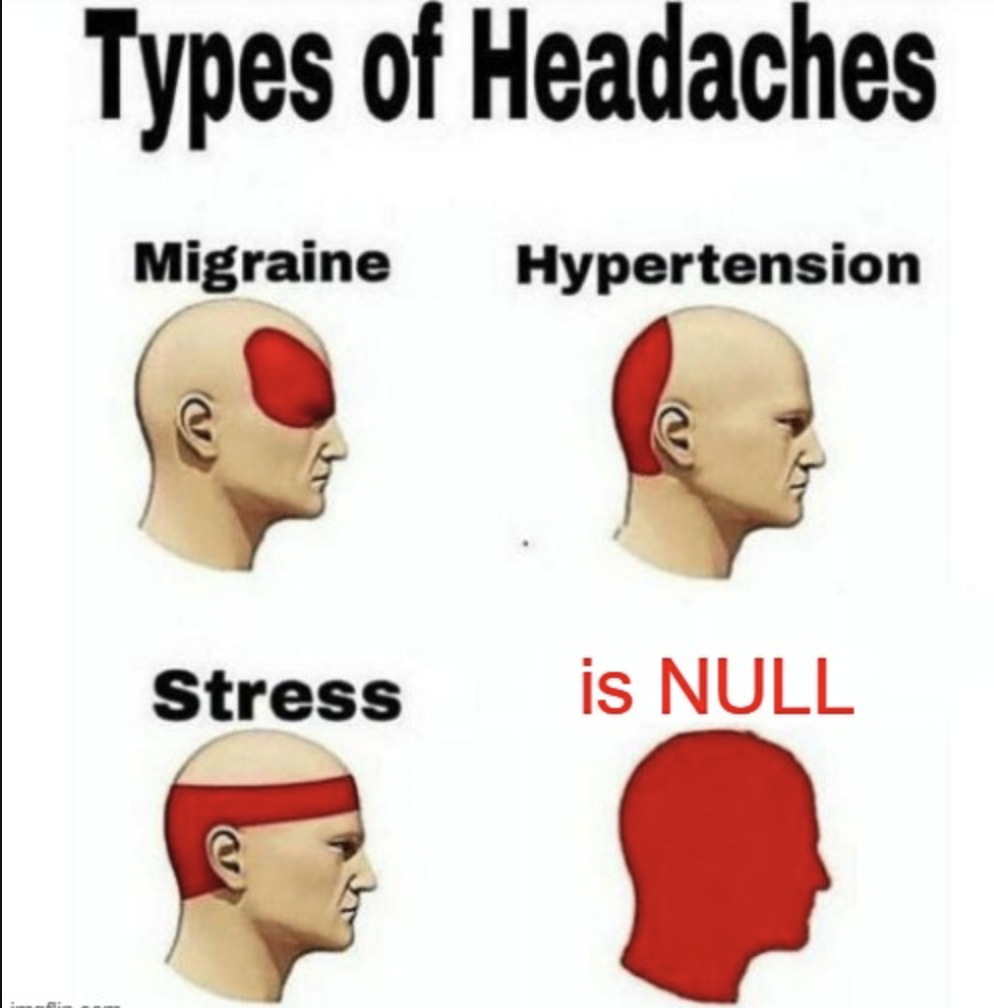
Anomalies in the imdb top 1000 table
This is the schema for the imdb top 1000 table
What anomalies can you spot?
CREATE TABLE imdb_raw (
Poster_Link TEXT,
Series_Title TEXT,
Released_Year TEXT,
Certificate TEXT,
Runtime TEXT,
Genre TEXT, -- "drama, sci-fi, action"
IMDB_Rating TEXT,
Overview TEXT,
Meta_score TEXT,
Director TEXT,
Star1 TEXT,
Star2 TEXT,
Star3 TEXT,
Star4 TEXT,
No_of_Votes TEXT,
Gross TEXT
);
1. [deletion] Losing Director Information
- If we delete the only movie by a particular director (e.g., “The Shawshank Redemption” is Frank Darabont’s only film in our top 1000)
- We lose all information that Frank Darabont exists as a director
Problem: Deleting a movie shouldn’t mean losing knowledge about directors
2. [insertion] Can’t Track Actors Without Casting Them
- Can’t add a new actor to the database unless they’re Star1, Star2, Star3, or Star4 in some movie
- What if they’re the 5th lead? Or we want to track them before casting?
Problem: Actor existence shouldn’t depend on being in top 4 billing
3. [update] Updating Actor Information
If “Tom Hanks” appears as:
- Star1 in “Forrest Gump”
- Star2 in “Saving Private Ryan”
- Star3 in “The Green Mile”
- Star4 in “Cast Away”
To fix a typo (e.g., “Tom Hansk”):
- Must search all 4 Star columns across all rows
- Easy to miss instances
4. [update] Certificate/Rating System Changes
If rating system changes (e.g., “PG-13” becomes “T-13”):
- Must update every row with that certificate
- No central place to manage valid certificates
What about anomalies in the trees table ?
What anomalies can you find for each type: insertion, update and deletion
Insertion Anomalies:
- To add a new tree species or genre without an associated tree, we’d have to insert a record with null values for most fields, which is not ideal.
- We can’t add a new location without adding a tree, even if no trees exist there yet.
Update Anomalies:
- If we need to update information about a type of tree (e.g., its genre), we’d have to update multiple rows, risking inconsistency.
- Same for updating location information (e.g., arrondissement name) would require updating multiple rows, again risking inconsistency.
Deletion Anomalies:
- If we delete the last tree of a particular species, genre, variety, we lose all information about that species, genre or variety.
In short
There’s a need for normalization when:
- the same data exists in multiple rows
- multiple columns with data of same nature, different types
- same data exists in multiple tables
every non-key attribute
must provide a fact about the key,
the whole key
and nothing but the key
Normal forms
Normal forms
A normal form is a rule that defines a level of normalization.
- UNF: Unnormalized form
- 1NF: First normal form
- 2NF: Second normal form
- 3NF: Third normal form
In general a database is considered normalized if it meets 3NF level.
There are multiple higher levels
- EKNF: Elementary key normal form
- BCNF: Boyce–Codd normal form
- 4NF: Fourth normal form
- ETNF: Essential tuple normal form
- 5NF: Fifth normal form
- DKNF: Domain-key normal form
- 6NF: Sixth normal form
Normal forms are a gradual step by step process towards normalization. Each form is a guide that focuses on a single type of problem.
We can always choose to apply a normalization form or to ignore it
In the following, we mention:
- Relation, or an entity: table
- Attribute : column
- Primary key
- Composite key : key composed of multiple attributes
1NF
Each field contains a single value
A relation is in first normal form
if and only if
no attribute domain has relations as elements.
which translates as no column as sets of values (relations) as elements
In short: columns cannot composite values : arrays, json, …
More on 1NF:
Does the tree table follow 1NF ? what about the imdb table ?
Wait, … what ?
There’s a contradiction between first normal form (1NF) and the existence of ARRAY and JSONB data types (see also POINT, HRANGE, composite types, and many other) in SQL databases.
The rule of thumb is :
When you frequently need to access, modify, handle the elements of the sets of values for a given record then apply 1NF
For instance a collaborative blog post where we start with 1 author (varchar), then a co-author comes along (array), then a third and a fourth. Then the 1st one give up and does not want to be in the list of authors etc etc etc. In that case using an Array to store the list of authors causes more trouble than it solves. and authors should have their own table.
In the end it’s a balance between simplicity and ease of control.
For instance:
- Use normalization (1NF) when:
- Storing a list of order items, where each item needs its own price, quantity, and product reference.
- Managing a list of phone numbers for contacts, where you need to query or update individual numbers.
- Use multi-value types when:
- Storing tags for a blog post, where the tags are simply a list of strings with no additional attributes.
- …
2NF
The table is in 2NF iff :
- The table is in 1NF,
- it has a single attribute unique identifier (UID),
- and every non key attribute is dependent on the entire UID
Some cases of non-compliance with 2NF
- Derived or calculated fields:
- Relation:
Employee(EmployeeID, Name, BirthDate, Age) - Here,
Ageis derived fromBirthDate, causing a partial dependency.
- Relation:
- Redundant information:
- Relation:
Order(OrderID, ProductID, ProductName, ProductCategory) ProductCategoryandProductNameboth depend onProductID, not the fullOrderID.
- Relation:
- general case: Inverted one to many
- A has many Bs
- Relation:
B(Bid, B.attribute, A.attribute)
- Composite keys with partial dependencies:
- Relation:
R(A, B, C, D)where(A, B)is the composite primary key - If
Cdepends only onA, we have a 2NF violation.
- Relation:
The 1 table version of the account phone table was not in 2NF.
see :
2NF violation in the trees table ?
The tree table has many 2NF violations, since all the categorical columns are into a one to many (category (A) has many trees (B)) relation.
2NF normalization tells us we should create a table for all the categorical columns.
But that may feel overkill and instead of simplifying the logical structure of the data it might add too much complexity it without clear gain. (but we will still do it anyway)
On the contrary, keeping the categories in the tree table is a form of denormalization.
When to apply 2NF to a categorical attribute ?
You might consider normalizing a categorical attribute (column) into a separate table if:
- The category data is large or complex (e.g., includes descriptions, hierarchies).
- Categories change frequently or need to be managed separately.
- There’s a need to enforce referential integrity on categories.
- The application requires complex operations or reporting on categories.
In practice the design of the database can evolve:
- Start with categorical attributes.
- You can always normalize later.
3NF
A relation R is in 3NF if and only if both of the following conditions hold:
- The relation is in second normal form (2NF).
- No non-prime attribute of R is transitively dependent on the primary key.
A transitive dependency occurs when a non-prime attribute (an attribute that is not part of any key) depends on another non-prime attribute, rather than depending directly on the primary key.
where:
- non-prime attribute: an attribute that is not part of any key
It’s becoming a bit abstract 🥱😴
For the statisticians in the room, it’s a bit like confonders.
So basically, in a table you would have 2 columns that are not keys that sort of depends on each other.
Example
Student(StudentID, Name, CourseID, CourseName, InstructorName)
This relation violates 3NF because:
CourseID → CourseName(CourseName depends on CourseID, not on StudentID)CourseID → InstructorName(InstructorName depends on CourseID, not on StudentID)
Here, we have transitive dependencies:
StudentID → CourseID → CourseNameStudentID → CourseID → InstructorName
Difference between 2NF and 3NF
3NF is similar to 2NF
The key differences:
-
Nature of the dependency:
- 2NF addresses partial dependencies on a key.
- 3NF addresses transitive dependencies through non-key attributes.
-
Scope of the problem:
- 2NF focuses on the relationship between non-key attributes and parts of the key.
- 3NF looks at dependencies between non-key attributes.
Denormalize
Denormalization means to choose not to follow a normal form to simplify things.
So, when can or should we denormalize?
Once you have thoroughly normalized your database, some difficulties may appear, either because the fully normalized schema is too heavy to deal with at the application level without any benefits, or because having a highly normalized schema involves performances penalties that you’ve measured and cannot tolerate.
Fully normalized schemas often have a high number of tables and references in between them. That means lots of foreign key constraints and lots of join operations in all your application queries.
When there’s no way to speed-up your application another way, then it is time to denormalize the schema, i.e. make a decision to put your data quality at risk in order to be able to serve your users and business.
Dimitri Fontaine - The Art of PostgreSQL (2022) The Art of PostgreSQL p 283
In short: Keep it simple
PostgreSQL multi-valued data types
PostgreSQL offers several data types that can store multiple values in a single column, which breaks the First Normal Form (1NF).
These types are often used for performance optimization, improved query efficiency, or when the data naturally fits a more complex structure.
There are many data types in postgreSQL
see for instance the long list of availabe data types when adding a column in pgAdmin
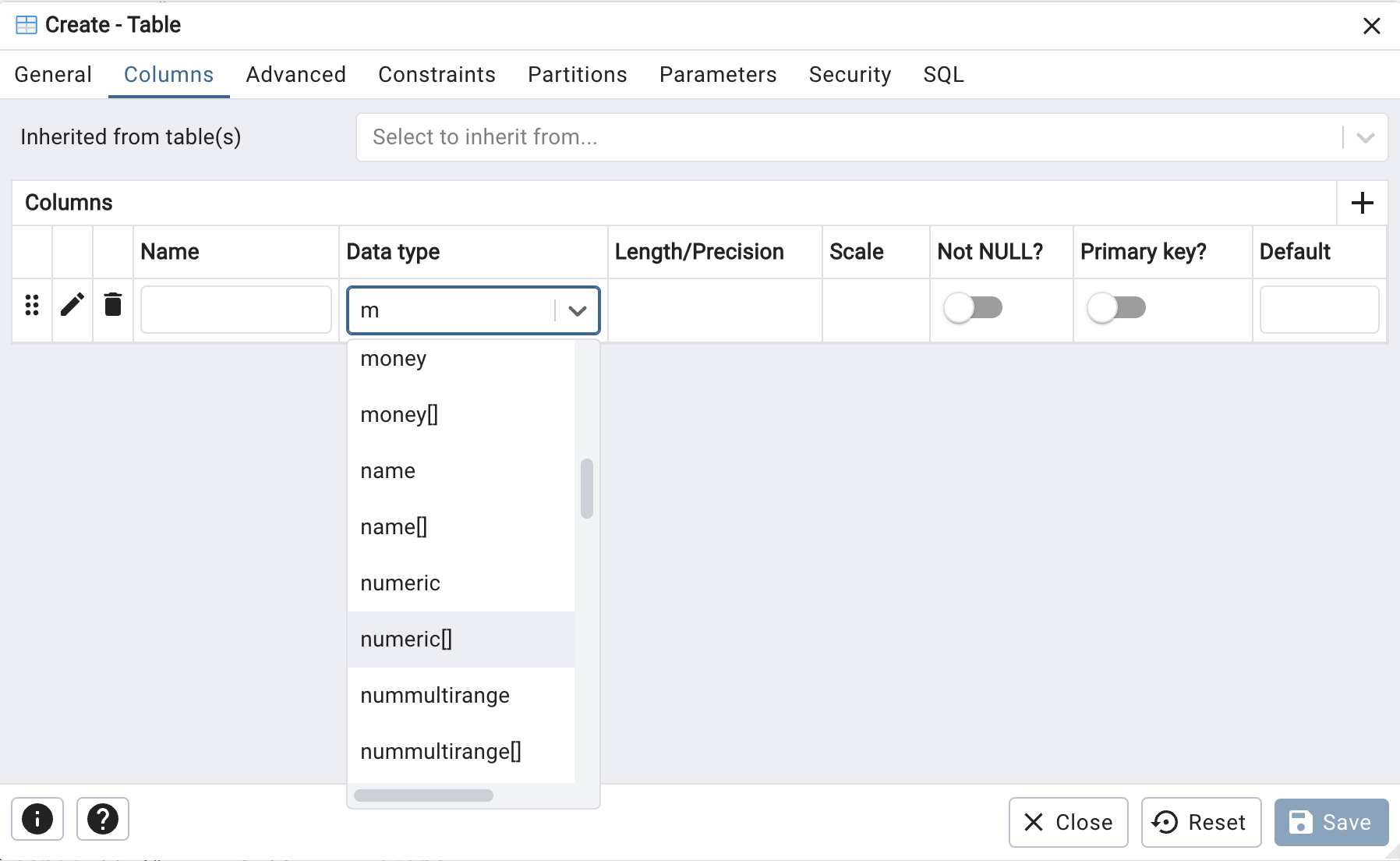
and the documentation on data types
Array Types:
Allows storing multiple values of the same type in a single column.
Example: INTEGER[], TEXT[]
When to use:
- When you need to store a fixed or variable number of elements of the same type.
- For implementing tags, categories, or any list-like data where order matters.
- When you frequently need to query or update the entire list as a unit.
JSONB (and JSON):
Stores JSON data with indexing and querying capabilities
When to use:
- For semi-structured data that doesn’t fit well into a relational model.
- When your application needs to store flexible, schema-less data.
- For data that is frequently read but less frequently updated.
- When you need to query or index JSON data efficiently.
also : HSTORE, RANGE …
Composite types
User-defined type that combines multiple fields into a single column.
Example: CREATE TYPE address AS ( street TEXT, city TEXT, zip TEXT );
When to use:
- When you have a logical grouping of fields that are always used together.
- For improving query performance by reducing joins.
- When you want to enforce a structure on a group of related fields.
